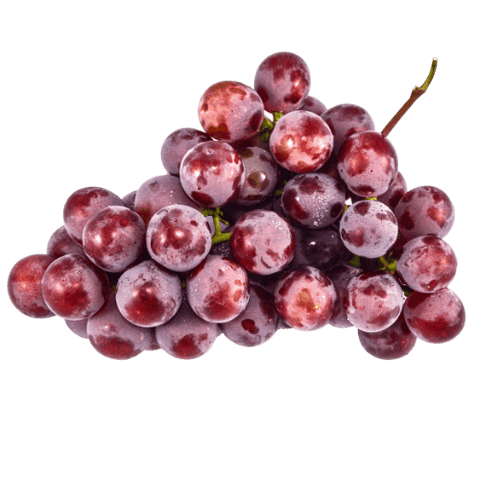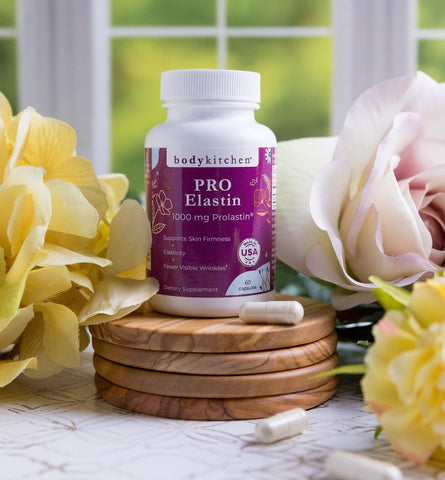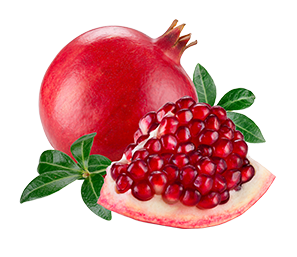Why a Women’s Multivitamin May or May Not Be All I Need to Take Daily
For most of us women, taking a simple women’s multivitamin seems like a no-brainer for meeting our daily nutrient needs. But truth be told, even the best women’s multivitamin might not be a one-stop shop for everything your body needs. Some women may actually need something more customized depending on your health goals, medical conditions and even genetics.
Let’s take a look at what nutrients might be missing in your lineup, how absorption can vary, and how key ingredients, including ones such as Optifolin and Vitacholine, can make a huge impact on your health.
What is Optifolin & Vitacholine, and Why Do I Need Them?
Optifolin+ is a patented form of active folate, 5-methyltetrahydrofolate (5-MTHF), which is an important molecule used in critical reactions throughout the body. Our body can typically take the folate we ingest from food and turn it into this active form, but for somewhere between 20 - 40% of the population, they may have a genetic mutation that reduces this ability.1
Women with this mutation have much less active folate available for things like DNA synthesis, cell renewal and heart health.
A recent study showed that Optifolin was much more bioavailable in the blood than regular folic acid, showing it might be a better form for those who have genetic barriers to proper folate absorption.2
VitaCholine is another patented nutrient that is missing in many women’s multivitamins. Often overlooked, research shows that choline plays vital roles in fetal development, liver health and brain function. While there are several decent choline-rich food sources, studies suggest most women fall short of meeting their needs.3
Together, both Optifolin+ and Vitacholine can enhance a women’s multivitamin from one that provides just the general basics to a one that specifically targets the unique needs of women’s physiology and genetics.
If you are in the market for a high-quality women’s multivitamin, check out Body Kitchen’s Women’s Multi which offers these key, patented nutrients plus so much more.
Missing Essentials: Nutrients Rarely Found in Standard Multis
Most women’s multi vitamins on the shelf hit the basics – Vitamin C, Vitamin A, Vitamin K, iron, and B vitamins – but leave out many premium ingredients that are targeted at deficiencies unique to some women. Alongside choline and methylated folate, some others include:
- Vitamin K2: Many women’s multivitamins might throw in some vitamin K, but it’s specifically vitamin K2 that research suggests is best for bone health.4
- Omega-3 fatty acids: We know omega 3’s are incredibly important for reducing inflammation, and yet many women’s multivitamins don’t include them. Sometimes it’s simply a matter of space within the vitamin itself, so take as an add-on to get the right daily dose.
- Potassium: Your body needs this electrolyte mineral for almost everything it does, but especially for the heart, muscles and nerves. But because high doses can be dangerous for some people, doses in multis tend to be low or non-existent. Consider supplementing separately if you need this important nutrient daily or just as needed.5
- Calcium & Magnesium: Both of these are larger minerals and simply hard to fit enough into a standard women’s multivitamin. So don’t fret if they are not in your favorite multi. Take separately so you can get just the right dose and spread throughout the day as needed.
When Your Genetics Block Multivitamin Absorption
Our genes can have a surprising impact on how we absorb, transform and utilize nutrients in our body. Normally acting as the master blueprint for helping us properly use nutrients from food, some of us have abnormal genes that reduce our ability to process key vitamins.
Beyond the genes for MTHFR and folate metabolism, we also have genes that affect how are bodies can use:6
- Iron
- Vitamin D
- Vitamin C
- Vitamin A
- B12
This means what while you may take an array of supplements, what you absorb may be entirely different from someone else. For someone with these altered genetic pathways, even the best women’s vitamins may not work.
If you are someone that continues to have deficiencies despite supplementation, talk with your healthcare provider about additional testing that may help uncover the true cause. A simple change to more active forms of these nutrients could make all the difference.
The Iron and Calcium Balance for Different Ages
These two minerals are tricky because while they are top priority for many women, more is not always better, and it can vary depending on your age and stage of life.
- Reproductive years: Iron needs increase during menstruation and pregnancy while calcium is a nutrient of concern for proper bone strength in adolescence and for the fetus during pregnancy.
- Pre and Postmenopausal: The menopausal stages typically require less iron due to menstruation changes, but calcium needs remain high as bone strength starts to take a hit from estrogen loss.
While you might consider supplementing with both of these nutrients at some point in life, it’s important to remember these are vitamins not to take together!7 They compete for absorption, so taking them separately by several hours will avoid that battle.
And ff you are wondering, what vitamins can I take together daily? It’s definitely these three: Vitamin D3, K2 and calcium. These three amigos work to not only get calcium in the bloodstream but then direct it to the teeth and bones.8 So make sure to choose a well-rounded women’s multivitamin that has these two helpers to go alongside your dose of calcium.
How to Build a Custom Stack for Optimal Health
The right women’s multivitamin can be a key part of your overall nutrition plan, but remember, it can’t always offer everything you need. Create a custom stack that truly supports your unique needs and lifestyle. Consider these steps:
- Start with a well-rounded women’s multivitamin. We suggest Body Kitchen’s Women’s Multi which comes with Optifolin+ and Vitacholine, along with vitamin K2, D3 and a whole host of other necessary vitamins and minerals.
- If you current multi doesn’t already have vitamins D3 and K2, find one that does or add separately.
- Boost with omega 3’s (DHA and EPA) daily for cardiovascular and anti-inflammatory support.
- Consider extra calcium and magnesium separately as these often can’t fit into a standard women’s multivitamin. Also forms and doses can vary based on individual needs.
- Consider gut-supportive nutrients such as probiotics and fiber if you aren’t able to get these from diet alone.
Final Thoughts
A daily women’s multivitamin can be a great start to rounding out your supplement plan, but for some, especially those with genetic limitations, additional support may be needed. High quality women’s vitamins using researched, premium ingredients may be needed to get actual results you can see and feel.
But let’s not forget, supplements can never replace a balanced and colorful diet rich in whole, unprocessed foods. Even the best women’s multivitamin is just nutritional insurance; our daily food choices still make the foundation.
If you feel like you need that extra support, level up to Body Kitchen’s Women’s Multi which is specifically designed to support women, at every age and stage.
References:
- https://www.ahajournals.org/doi/10.1161/circulationaha.114.013311
- https://pmc.ncbi.nlm.nih.gov/articles/PMC12499688/
- https://pmc.ncbi.nlm.nih.gov/articles/PMC12346485/
- https://ods.od.nih.gov/factsheets/VitaminK-HealthProfessional/
- https://ods.od.nih.gov/factsheets/Potassium-Consumer/
- https://pmc.ncbi.nlm.nih.gov/articles/PMC6014201/
- https://pubmed.ncbi.nlm.nih.gov/38969940/
- https://pubmed.ncbi.nlm.nih.gov/32972636/














